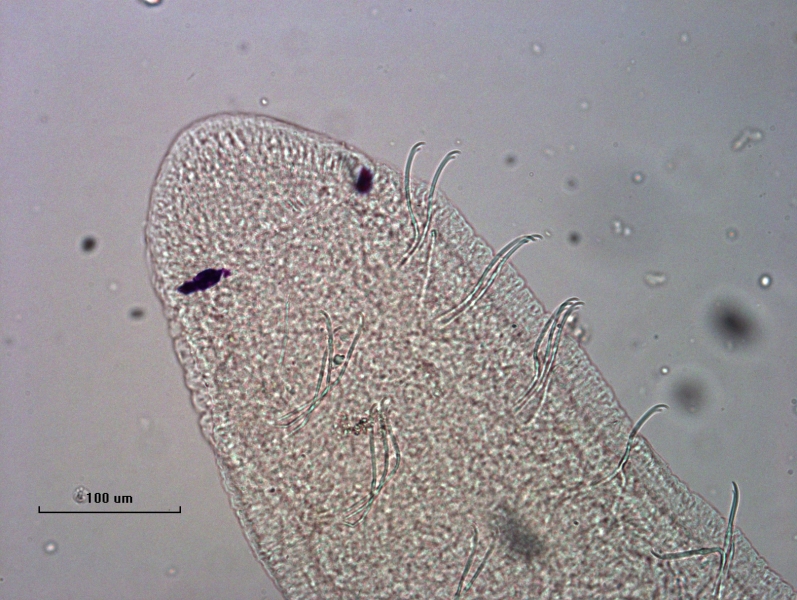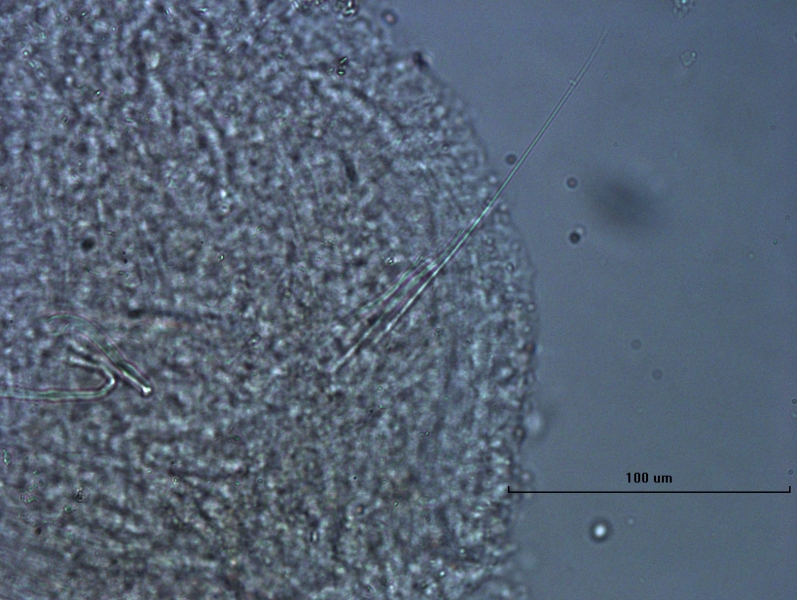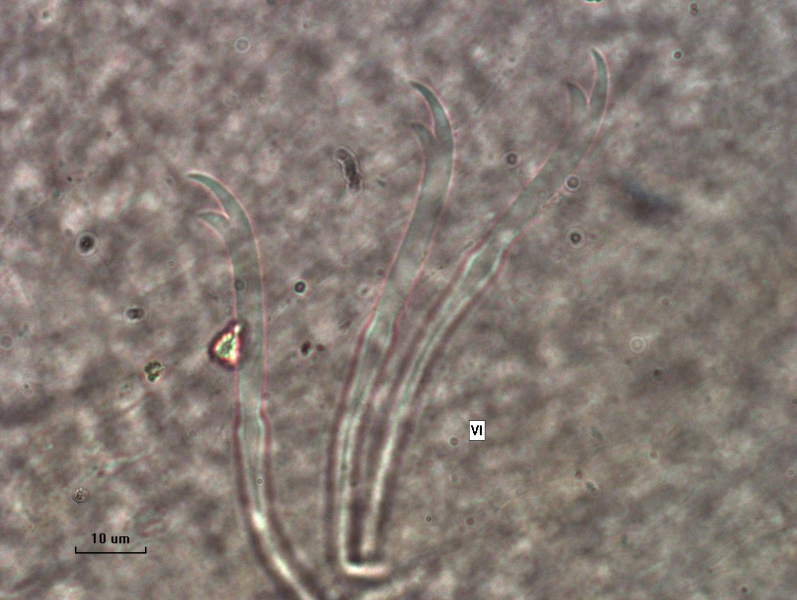Nais pardalis
Taxa description
Nais pardalis Piguet, 1906 is a freshwater oligochaete worm that is uncommon in the Great Lakes. It is a naidid worm with dorsal bundles beginning in VI and ventral bundles beginning in II, hair chaetae in the dorsal bundles, and without a proboscis. Worms in the genus Nais have 1–2 hair and needle chaetae in each dorsal bundle with simple-pointed or bifid needles; the ventrals usually change between V and VI, often quite dramatically. This change is more pronounced for N. pardalis, which has enlarged ventral chaetae that start in VI, though they may not be in every bundle. The dorsal bundles have 1–2 hair chaetae and 1–2 bifid needles with equal, parallel teeth. The anterior ventral bundles of II–V have 2–5 chaetae with thin, curved upper teeth that are about twice as long as the lower tooth. Starting in VI, there are 1–5 variable chaetae per bundle which may have a short, thin upper tooth or be enlarged with a long, thick upper tooth that is 2–3 times as long as the lower tooth. If mature, there are three penial chaetae per bundle. It is possible that N. pardalis may be part of the N. variabilis complex with N. bretscheri.
Distinguishing features
N. pardalis is identified mainly by the enlarged ventral chaetae starting in VI, which have long straight upper teeth at least twice as long as the lower tooth. It is also identified by dorsal bundles starting in VI, few hairs and bifid needles in dorsal bundles, ventral chaetae changing shape in VI, anterior ventral chaetae with thin, curved upper teeth, posterior ventral bundles are variable and contain either normal chaetae with short, thin upper teeth or enlarged chaetae with long, straight upper teeth.
Habitat
Lake occurrence
Similar species
N. pardalis is likely part of the N. variabilis complex, so it is possible to be confused with N. variabilis and N. bretscheri. If a specimen of N. bretscheri doesn’t have giant chaetae, it will not be possible to distinguish from N. pardalis because both may have enlarged chaetae with very long upper teeth. N. bretscheri usually has eyes, while N. pardalis may or may not have eyes. N. pardalis usually has upper teeth 2–3 times the lower, and N. variabilis usually has teeth that are equal in length, but N. variabilis has quite variable chaetae so it is possible to have upper teeth that are longer than the lower. There is also a difference in the needle chaetae, which typically have very short teeth that are hard to distinguish in N. variabilis, but the teeth are longer and easier to see in N. pardalis. There may be seasonal or spatial variation in the chaetae contributing to the confusion with N. variabilis and N. bretscheri.
Relative size
N. pardalis is a small freshwater oligochaete.
Does it have a barcode reference from the Great Lakes?
N. pardalis is a small freshwater oligochaete.
References
Kathman, R.D., and R.O. Brinkhurst. 1998. Guide to Freshwater Oligochaetes of North America. pp. 86–87, 40, 80–89.
Hiltunen, J.K., and D.J. Klemm. 1980. A Guide to the Naididae (Annelida: Clitellata: Oligochaeta) of North America. pp. 24, 35.




